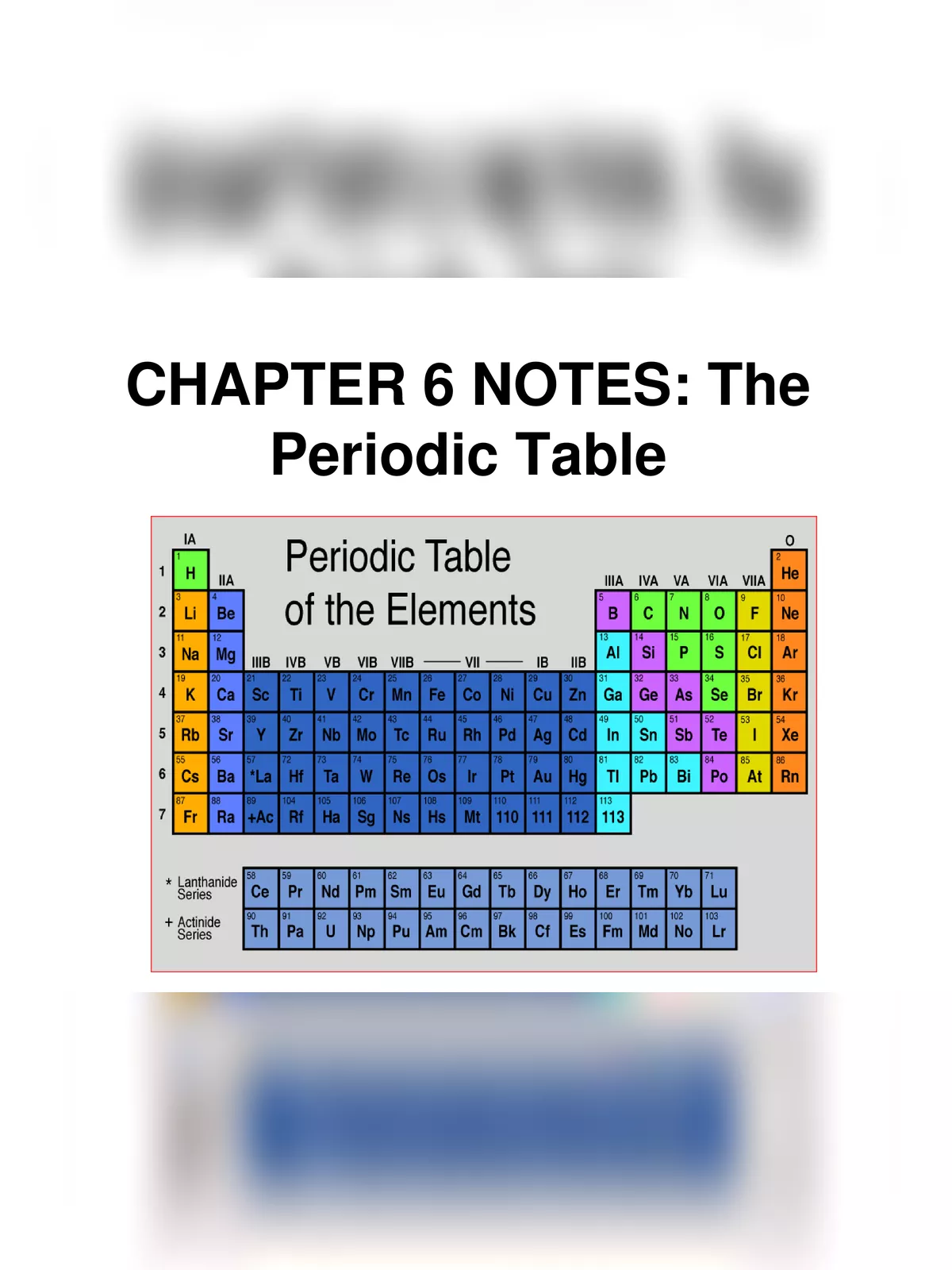Periodic Table Notes - Summary
Hello, Friends! Today, we are excited to share the **Periodic Table Notes PDF** with you to assist students in their studies. If you are looking for **Periodic Table Notes** in PDF format, then you’ve come to the right place! Feel free to download it directly from the link provided at the bottom of this page.
The **Periodic Table** shows that the physical and chemical properties of elements are periodic functions of their atomic numbers. It arranges elements in order of their atomic numbers, letting elements with similar properties fall into the same columns. The table is organized based on electron configuration. It’s a helpful chart where chemical elements are displayed by increasing atomic number and grouped according to recurring properties. The seven rows of the periodic table are called periods.
Periodic Table Notes
- In 1869, the Russian chemist Dmitri Mendeleyev introduced his remarkable system called the periodic table.
- The periodic table is organized by atomic masses and shares similar properties. In each row, atomic masses increase as you move right. Each column includes a group of elements with similar chemical behaviors.
- In the modern periodic table, every box has four pieces of information. Along with the element’s name and symbol, the atomic mass sits at the bottom, while the atomic number is at the top. Elements are arranged horizontally in order of increasing atomic number in rows known as periods.
Features of Mendeleev’s Periodic Table
- Twelve horizontal rows were condensed to 7, called periods.
- Eight vertical columns are recognized as groups.
- Groups I to VII are divided into A and B subgroups.
- Group VIII has no subgroups and includes three elements in each row.
- Elements in the same group share similar properties.
Achievements of Mendeleev’s Periodic Table
- A systematic study of elements: Elements with similar properties were grouped together, making it easier to study their chemical and physical behaviors.
- Correction of atomic masses: Mendeleev’s periodic table helped correct the atomic masses of several elements, such as beryllium, which was corrected from 13.5 to 9.
- Prediction of properties of yet undiscovered elements: Names like eka-boron, eka-aluminum, and eka-silicon were assigned to elements yet to be discovered. Their properties were anticipated accurately based on the elements in the same group. These elements turned out to be scandium, gallium, and germanium.
- Placement of noble gases: Once discovered, noble gases were easily placed in a new group called the zero group of Mendeleev’s table without disturbing the existing order.
Limitations of Mendeleev’s Periodic Table
- Position of hydrogen: Hydrogen shares similarities with the alkali metals (IA) and halogens (VIIA), leading Mendeleev to struggle with its positioning.
- Position of isotopes: Isotopes have different atomic weights but were not assigned different positions in Mendeleev’s periodic table.
- Anomalous pairs of elements: Cobalt (Co), having a higher atomic weight, was placed before Nickel (Ni) in the periodic table.
- Placement of similar elements in different groups: Platinum (Pt) and Gold (Au) exhibit similar properties yet are found in separate groups.
- Cause of periodicity: Mendeleev could not explain why periodicity occurs among elements.
You can easily download the Periodic Table Notes PDF using the link given below.
